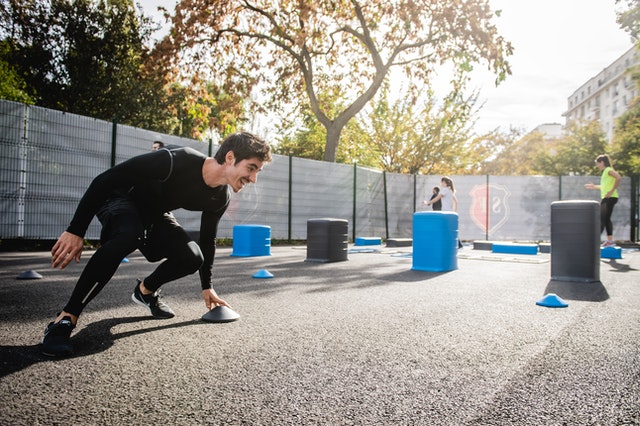This post may contain affiliate links. Please read the disclaimer for more information.
In today’s world, we have a problem of becoming too pigeon-holed with certain ideas. A great example of one of these areas is fitness and the way we approach it.
For most “fit” people, a gym membership, car ride, and one hour of daily exertion is the tried and trusted formula. We seem to forget that it is possible to get physical activity in throughout the day in your regular life.
One hour of intense exertion at the gym is supposed to make up for the timespan you weren’t moving during the rest of the day. Unfortunately, this is not how it works.
Although it seems logical in our heads, our bodies would rather be moving more often with less intensity than briefly with a lot of intensity. The real message is consistency over intensity.
Mark Sisson came up with the term “microworkouts” and has been using them for years to combat this issue.
Instead of going to the gym, he may just do 20 press-ups against his kitchen counter. After a period of writing, he might go for a walk and then do 10 air-squats. Later, he might drive back home from somewhere and do 5 pull-ups once he gets home.
To put it another way, it’s about accumulating volume over time as opposed to maxing yourself out in one short period.
Mark even disperses these microworkouts during his work just like I do. His ‘Don’t Just Sit There‘ program is a perfect outline of what you can do during your work hours, even in an office job.
Avid readers of mine may know that I’ve had a pull-up bar hanging in my doorway for about a year now. Here’s the thing though, I rarely ever do pull-ups.
The problem is I feel weak so they intimidate me. I have to build myself up to convince myself to get up there.
Today, however, I did 3 pull-ups in the early afternoon, 3 more in the early nighttime, and 3 more to finish the night. That’s a total of 9 pull-ups which isn’t going to set the world alight but the point is that it’s 9 more than I usually do.
The best part, it wasn’t that stressful because I only had to push myself a little bit, but now I will benefit from the cumulative effect. Even if I only did 3 today and 3 tomorrow that still would’ve been a success in my eyes.
Firas Zahabi, renowned mixed martial arts and grappling coach, advocates for a very similar approach to training. It is what he does with his professional athletes that he trains and also what he recommends to the average person (even if you don’t normally exercise). Zahabi says,
“You should never be sore. If you’re sore, you overdid it….Make your workouts a 7 out of 10 and do them everyday. You’re going to get far more training hours, you’re going to spike your metabolism far more often, your energy levels and mood are going to be up, and training is going to be more addictive.”
Let me lay out a scenario so we can visually see how effective this approach is long-term:
My friend (Tom) and I (Will) want to do more squats to get stronger.
Tom wants to go about it the way many would: we hype ourselves up to go to the gym and hit it hard on the first day, limping out of the gym already feeling sore. Tom will continue in this approach because he’s not thinking long-term. I, however, like to plan for my future self and think about what would be smartest.
I decide to do 5 squats a day every single day. Tom gets into the gym 2 times a week and can struggle through 10 squats each time. Assuming everything else is equal, who would be better off?
After one year, I manage to get 1,825 squats done while Tom only manages 1,040 squats. I have done 785 more squats than Tom in the first year and if we continued at this rate, the difference would increase even more.
Set up your systems to be simple and achievable and you will be rewarded exponentially as time goes on.
While I do my single set of 5 squats without much struggle, Tom struggles through his set of 10, gets sore, then has to motivate himself to do it again a couple days later. Is this bringing back any memories for you, because it is for me.
I used to work out the way Tom does. That’s why I never wanted to go to the gym. It felt like too much work and it felt like a punishment.
Now, I believe fitness should be fun. If it wasn’t, I wouldn’t do it. That’s why I will pick up things like soccer, rock climbing, martial arts, movement practices, walking, and so on.
Experiment with microworkouts and see how you like them. Since I came across this concept, I was completely sold.
I like to write about natural movement and how it’s important to get movement variation and movement consistency in; this was the last piece of the exercise puzzle I needed.
Now I “workout” a couple times a day for very short stints doing whatever I feel like at that time. As long as I’m doing them often, I’m happy.


Leave a Reply